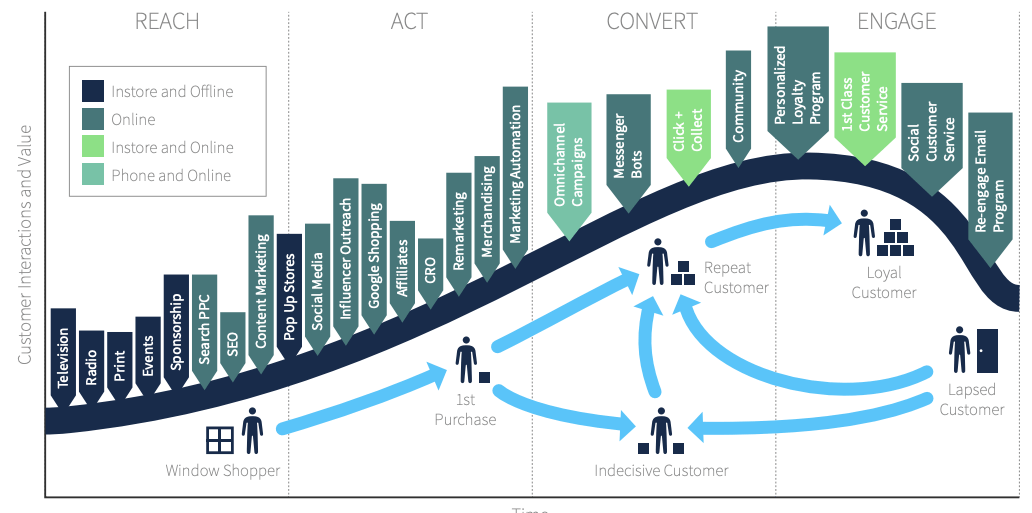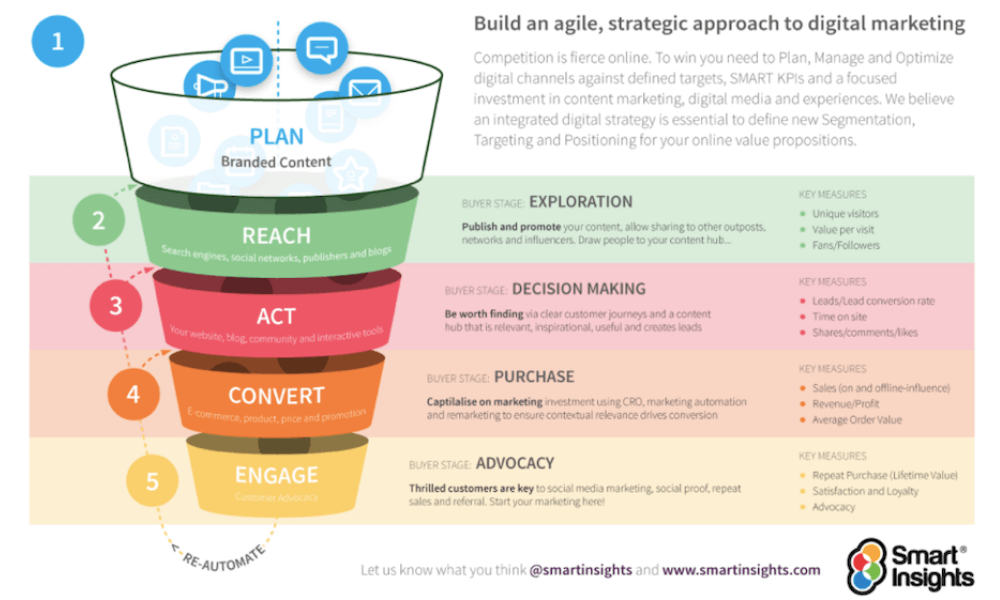Perhaps the most important step and also the biggest challenge for any marketer is to build a strong market orientation
Let's talk about market orientation. It’s perhaps the most significant section of your marketing strategy as you look to create a formal, documented paper where you intend to formally "introduce your customer to the organization". Strong businesses put the customer first. That's why we recommend you apply the RACE Framework to improve your customer journeys.
Market Orientation sits before strategic thinking or the creation of a segmentation strategy or even the decisions to be taken on how your brand will be positioned. Yet it seems to be one of the most difficult tasks in terms of getting total organizational buy-in.
A recent Harvard Business Review entitled "Why CMO's Never Last" highlighted the concern that CMO's are
"not given enough authority to do what's expected of them and also they are led down a marketing communications route or product strategy" - which suggests organisations are becoming more impatient for immediate results and action rather than allowing time for a documented process of starting with the needs and wants of the customer."
As such, Harvard defines Market Orientation as “when a company completely understands its markets and the people who decide whether to buy its products or services”.
We've got marketing tools and training to support your business in your mission to put your customers at the center of your marketing strategy.
Need a plan to create a winning marketing strategy?
Get started today using a tried and tested step-by-step process to optimize your marketing.
Start Now
When introducing the concept of Market Orientation you may be shot down with the response: “there is not the time to do the research” or “We don’t have the budget to set aside for this type of research” – this amazes me as for some reason most organizations do find the time and budget to invest in the more tactical elements of their marketing strategy i.e. the communications elements but without understanding their customer?!
But another reason may be that the organization is deeply entwined with a different approach to orientation? The birth of the industrial revolution also saw many organizations take up an alternative approach to market orientation and opt for Product (starting with the product) or Sales Orientation (starting with the sales needed).
But Market Orientation is beginning to take center stage thankfully and this is in part due to the rise in digital technology that has accelerated how customers can now interact with your brand, whether they choose to buy from you or whether they choose to opt for a competitor.
As Gerry McGovern, author of “Transform, a rebels guide for digital transformation” states:
“The rise in interest in customer experience is a response to the rise in power of customers. Focusing on customer experience is something that has been forced on organisations as they see loyalty and trust precipitously decline”.
In the new digital landscape, customer expectations are growing. The 2020 Salesforce State of the Connected Customer summarizes:
"Digital-first behavior is here to stay as customers develop new habits that will last for the long term. As digital engagement grows, customers expect companies to digitize their operations for multichannel, hightouch interactions. This relies in no small part on the use of personal information, and customers are calling for enhanced transparency and stewardship.
Eighty-eight percent of customers expect companies to accelerate digital initiatives due to COVID-19."
Introducing a framework for Market Orientation
So where to start?
It’s important to remember you can make small changes now within your business and here are a few suggestions as to how you can start now and begin to change the culture and way of working:
- Objective - But before you start, ensure you have created a reason or objective as to why you are beginning this process? Can you tie this initiative back to an over-arching business goal? This will help when it comes down to getting boardroom approval and also when you look to gain senior management buy-in to market orientation.
- You are not the customer – Understand that you are not the customer. You literally know nothing! If you can start with a blank sheet and get into the shoes of your customer.
- Document your findings – As you begin to dig into customer insights, get into the habit of documenting your findings. Something that’s really accessible and open for others across the organization to add insights and examples. Google Docs and Google Keep are my preferred file-sharing docs that I use. I look to label each document based on different customer subject insights that may crop up gathering quantitative and qualitative data.
- Build a virtual team – Find other like-minded champions in your organization who live and breathe and who share in the approach. Try your customer-facing depts for like-minded allies such as business development, customer service, sales, and marketing.
- Beware of the HiPPO – (The highest paid person's opinion) – whilst they may well be in a position of authority, sadly the chances are that they are probably not involved directly in speaking with, listening or interviewing customers so it may be that their opinions could be built on assumption?
- Monitor brand mentions -Social media is a free and accessible starting point in getting some quantitative data on the health of the brand. Social media platforms such as Mention, Talkwalker Alerts or Moz can provide you with weekly and monthly reporting on your brand.
- Plot a Customer Journey Map - Understanding how users are interacting and navigating your branded platforms is essential to understand what is deemed important and accessible but also to get a better understanding of what your audience is trying to achieve and the paths taken to achieve their task (both online and offline channels).Smart Insights members are using our RACE Framework to plan, manage and optimize customer journeys. Integrated across the key customer touchpoints of reach, act, convert, and engage, our tried-and-tested RACE Framework empowers marketers and managers to master their customer journey planning. See this post for more B2C and B2B Lifecycle marketing examples and map out the touchpoints you have covered in a gap analysis.

Need a plan to create a winning marketing strategy?
Get started today using a tried and tested step-by-step process to optimize your marketing.
Start Now
- Gather Customer Service insights - Your customer service team is one of the most important teams you need to be getting involved when creating a market orientation plan. They should be able to paint a picture of common customer service issues and in particular pain points the customer may experience
- Dig into analytics – Your analytics platforms can provide you with quantitative insights as to how and what your audience navigates to and from across your digital channels. If you use Google Analytics, analyze your behaviour reports from the main navigation. This section of analytics will introduce you to some specific reporting based on your audience interaction such as: Site Search - What users search for on your website, Behaviour Flow - The route users take when navigating through your site, Site Content - The most popular content viewed and where users both land on your site and exit and Goals - If you have created goal reporting - look into success measures or not
- Speak to your audience - The best insights will come from speaking to your audience directly. This could be your current customers, loyal customers and customers that no longer buy/engage from you. Set time aside to speak to a customer from all three categories once a month and plan out your questions in advance of a telephone call. The idea of speaking to your audience is not to pepper them with countless questions but allow them to speak and for you to listen to their issues and challenges.
- Build a dashboard - As discussed earlier, create a visual dashboard of the findings and insights you are beginning to identify.
Apply a data-driven approach to your marketing strategy with our step-by-step marketing solutions, all integrated across the RACE Framework.

Need a plan to create a winning marketing strategy?
Get started today using a tried and tested step-by-step process to optimize your marketing.
Start Now
Remember, you are not looking for solutions within a market orientation approach, you are looking to gradually move the voice of the customer to the center of your organization. To listen to their challenges and problems and to provide the evidence to the wider organization
I'd love to hear any of your own feedback and examples as to how you may have a documented plan in place for market orientation?








